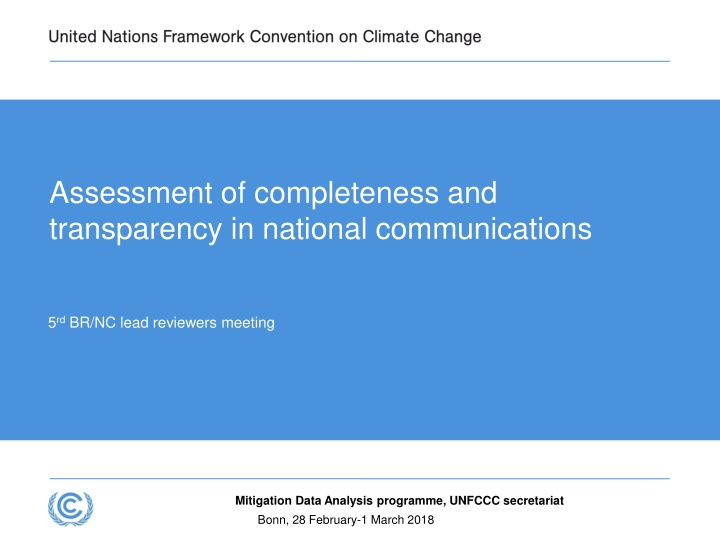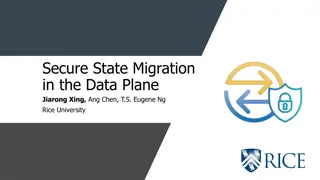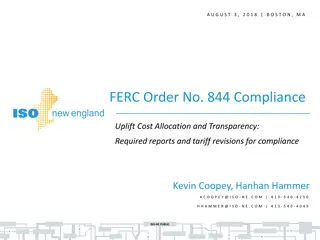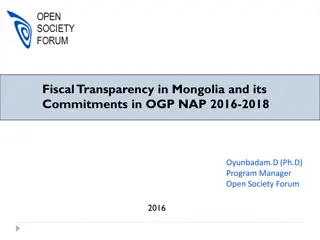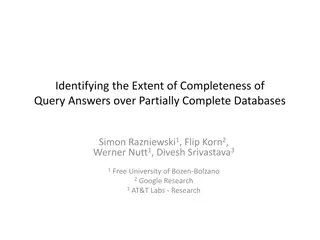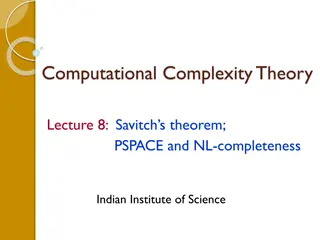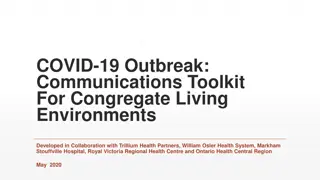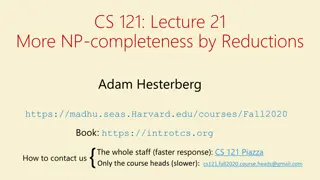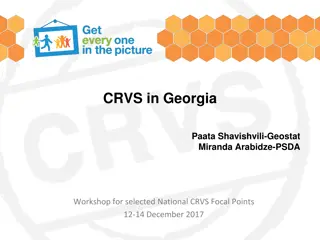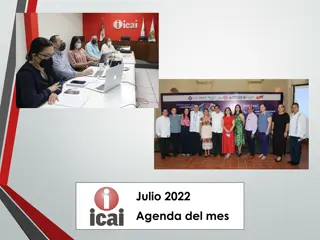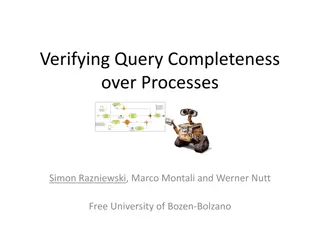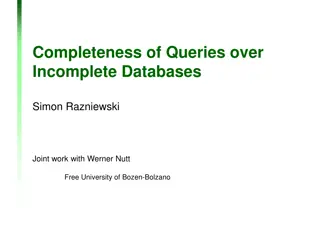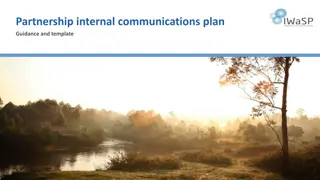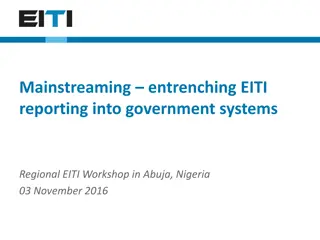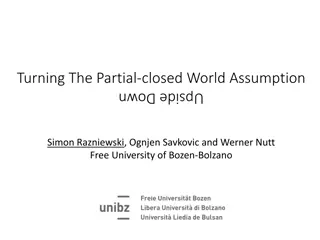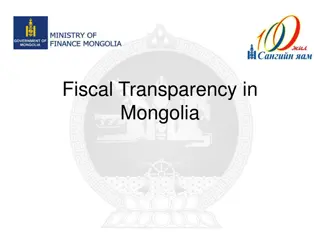Assessment of Completeness and Transparency in National Communications
This presentation highlights the assessment of completeness and transparency in national communications, focusing on the analysis of mitigation data and key findings from lead reviewers' meetings. It covers the approach, scope, goals, and recommendations for future reviews of Biennial Reports (BRs) and National Communications (NCs) under the UNFCCC. The use of scorecards and statistical analysis based on evidence from reviews are discussed in detail.
Download Presentation

Please find below an Image/Link to download the presentation.
The content on the website is provided AS IS for your information and personal use only. It may not be sold, licensed, or shared on other websites without obtaining consent from the author.If you encounter any issues during the download, it is possible that the publisher has removed the file from their server.
You are allowed to download the files provided on this website for personal or commercial use, subject to the condition that they are used lawfully. All files are the property of their respective owners.
The content on the website is provided AS IS for your information and personal use only. It may not be sold, licensed, or shared on other websites without obtaining consent from the author.
E N D
Presentation Transcript
Assessment of completeness and transparency in national communications 5rd BR/NC lead reviewers meeting Mitigation Data Analysis programme, UNFCCC secretariat Bonn, 28 February-1 March 2018
Outline of the presentation Mandate for preparation of the scorecard Scope of analysis of the IDR6s Goal and inputs used for the analysis Assessment scoreboards for NCs and supplementary information under the Kyoto Protocol Conclusions and recommendations
Conclusions of 2nd and 3rd LRs meetings Recommendation from the LRs to the ERTs: The LRs at the 2nd meeting confirmed that the four-gradation approach used to assess completeness and transparency had proven to be useful and recommended that the ERTs continue to follow this approach in future reviews of BRs. In response to this request, the secretariat prepared two background papers to support the introduction of the scorecard for BR reviews. Using the same approach, the secretariat has prepared the scorecards for the review of NCs and supplementary information under the Kyoto Protocol.
Scope of analysis of IDR6s In preparation to this meeting, the secretariat has conducted: The analysis of review and assessment practices applied in the NC6 reviews; The analysis of the linkages between the ERT findings, the recommendations and the overall assessment of completeness and transparency for the submission; The statistical analysis for preparation of two scorecards for NCs and for supplementary information under the Kyoto Protocol based on the evidence from the IDR6s.
Goal and inputs used for the analysis The main goal of the analysis was: a) to identify patterns in applying the four gradations by the ERTs, with the focus on mostly and partially to analyze the assessment of completeness and transparencyof each NC6 section b) Three types of inputs from the IDR6s were used for the analysis: a) b) c) Findings on mandatory reporting requirements ( shall requirements) Number of recommendations made Assessment of completeness and transparency (summary tables)
Assessment scoreboard for NCs Number of mandatory requirements in the Reporting guidelines 2 Assessment of completeness and transparency Note: expert judgement MC/MT Number of missing mandatory requirements 1-2 NC section Executive summary National circumstances 2 1 2 PC/PT GHG inventory 2 1 MC/MT 2 PC/PT PaMs 5 1-2 MC/MT 3-5 PC/PT Projections and the total effect of PaMs 11 1-3 MC/MT 4-11 PC/PT Vulnerability assessment, climate change impacts and adaptation measures Financial resources and transfer of technology 1 1 Note: expert judgement MC/MT Note:In cases where the number of missing mandatory requirements is equal to the number of mandatory requirements, the ERTs should decide whether to assess the respective section as partially complete/transparent or not complete/transparent. 10 1-3 4-10 PC/PT Research and systematic observation 4 1-2 MC/MT 3-4 PC/PT Education, training and public awareness 1 1 Note: expert judgement
Assessment scoreboard for supplementary information under the KP Number of mandatory requirements in the Reporting guidelines 3 Number of missing mandatory requirements 1 Assessment of completeness and transparency MC/MT Supplementary information under the Kyoto Protocol National system 2-3 PC/PT National registry 2 1 MC/MT 2 PC/PT Supplementarity relating to the mechanisms pursuant to Articles 6, 12 and 17 1 1 Note: expert judgement PaMs in accordance with Article 2 4 1-2 MC/MT 3-4 PC/PT Domestic and regional programmes and/or arrangements and procedures 3 1 MC/MT Note:In cases where the number of missing mandatory requirements is equal to the number of mandatory requirements, the ERTs should decide whether to assess the respective section as partially complete/transparent or not complete/transparent. 2-3 PC/PT Information under Article 10 2 1 MC/MT 2 PC/PT Financial resources 4 1-2 MC/MT 3-4 PC/PT Minimization of adverse impacts in accordance with Article 3, paragraph 14 3 1 MC/MT 2-3 PC/PT
Outliers in the assessment Even though in the general the ERT s assessments were largely consistent, there were a few outliers, in particular in the assessment of transparency of reporting on PaMs and projections. The reasons for this could be application of expert judgement, different understanding of importance of certain mandatory recommendations, impact on assessment of multiple encouragements, etc. PaMs No. of Parties No. of Recs/Assessment 0 Recommendations, Transparent 10 0 Recommendations, MT 1 1 Recommendation, MT 18 2 Recommendations, MT 8 3 Recommendations, MT 1 1 Recommendation, PT 2 2 Recommendations, PT 3 Assessment T MT PT NT Parties Total 10 28 5 0 43 Projections and total effect of PaMs No. of Parties No. of Recs/Assessment 0 Recommendations, Transparent 11 1 Recommendation, MT 16 2 Recommendations, MT 3 3 Recommendations, MT 1 1 Recommendation, PT 1 2 Recommendations, PT 4 3 Recommendations, PT 4 5 Recommendations, PT 3 Assessment T MT PT NT Parties Total 11 20 12 0 43
Conclusions and recommendations 1. The LRs welcomed the work done by the secretariat in preparation of the scorecards for NCs and supplementary information under the Kyoto Protocol 2. The analysis of recommendations and summary tables in the IDR6s has demonstrated that the assessment of completeness and transparency across the IDR6s was generally consistent 3. The suggested two scorecards are based on strong empirical foundation and it would be plausible to apply them for the NC7 reviews 4. The RPG will be updated to include the two scorecards and will recommend to use them for the upcoming review cycle
